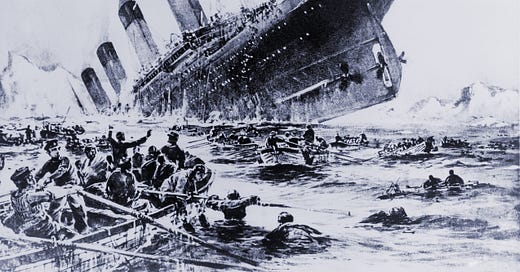Further Thoughts Regarding ChatGPT and Process Safety
Yesterday’s post ChatGPT: A Process Safety Expert generated some useful feedback regarding the utility of this software in the world of process safety. Based on that feedback, here are a few further thoughts.
ChatGPT / Artificial Intelligence
ChatGPT is part of the broader world of Artificial Intelligence ― at least that is what it claims. Here is how the program responded to the question, ‘Is ChatGPT artificial intelligence?’
Yes, ChatGPT is a form of artificial intelligence (AI). It uses . . . deep learning techniques to generate human-like text based on the input it receives. It falls under the broader category of natural language processing (NLP) and is often referred to as a language model or conversational AI.
Discussions as to the nature of intelligence are way outside the scope of this process safety blog. Yet it seems to me that intelligence (whether artificial or natural) should involve some degree of creativity. When I look at how ChatGPT responded to the question ‘What is most important element in process safety management?’ I do not see any creativity ― merely a summary of what other people have said in response to that question. That summary was a good one, but it did not provide any original thinking.
This critique to do with the lack of creativity is, in my judgment, not merely academic. Such thinking is at the heart of process safety management. Professionals in this discipline have to ‘think the unthinkable’.
Some years ago I was involved in the follow up to a very bad accident. (There were no fatalities but there were serious injuries; one man was blinded.) In discussions with the facility manager following the event he kept on saying, “I couldn’t believe it, I couldn’t believe it”. Neither he, nor anyone else at that facility, had ever thought that such an event could happen.
The image at the head of this post is of the sinking of the Titanic. Many causes have been put forward as to why this catastrophe happened. These causes include the lack of binoculars for the lookout and poor procedures for that new invention, the wireless. But the root cause can be seen in what the the ship’s captain said before the start of that fateful journey.
When anyone asks me how I can best describe my experience in nearly forty years at sea, I merely say, uneventful. Of course, there have been winter gales, and storms and fog and the like. But in all my experience, I have never been in any accident . . . of any sort worth speaking about. I have seen but one vessel in distress in all my years at sea. I never saw a wreck and never have been wrecked nor was I ever in any predicament that threatened to end in disaster of any sort.
Or, as Julia Hughes pithily said,
Until the moment she actually sinks, the Titanic is unsinkable.
Subjectivity
One commenter on yesterday’s post stated that ChatGPT gave a variety of answers when asked about a certain chemical’s flash point. Moreover, some of those answers were wrong.
ChatGPT is fundamentally a subjective tool. It provides opinions ― sometimes very good opinions ― but opinions nonetheless. If we want to know an objective fact, such as the flash point of a chemical, we need to go to a data base, which can be either online or offline.
Real Time Response
In another post ― Process Safety and Railroads ― we discuss the application of process safety techniques to the railroad industry. In the background a few of us talked about using AI for real-time incident management. Could AI, we wondered, have helped the Fire and Police Chiefs in their response to the derailment that occurred in East Palestine, Ohio last year?
This is a large topic, one we will probably discuss in a separate post as time permits. The short answer to the above question was, ‘No, AI cannot role play a Fire or Police Chief in an incident involving highly hazardous chemicals ― at least, not yet’.






